 by "ttyymmnn" (ttyymmnn)
by "ttyymmnn" (ttyymmnn)
Published 11/07/2017 at 12:35
 by "ttyymmnn" (ttyymmnn)
by "ttyymmnn" (ttyymmnn)
Published 11/07/2017 at 12:35
Tags: planelopnik history
; Planelopnik
STARS: 18
!!! UNKNOWN CONTENT TYPE !!!
Welcome to
This Date in Aviation History
, getting of you caught up on milestones, important historical events and people in aviation from November 4 through November 7.
!!! UNKNOWN CONTENT TYPE !!!
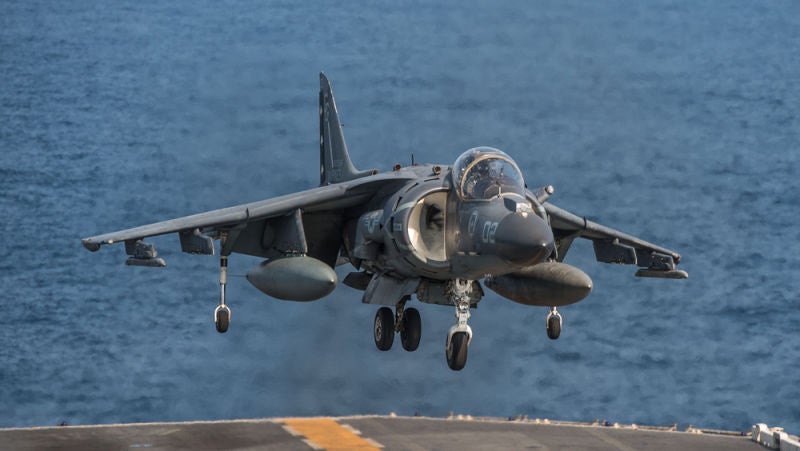
November 5, 1981 – The first flight of the McDonnell Douglas AV-8B Harrier II. The aviators of the United States Marine Corps have a long and rich history of providing close air support, an affinity with the Marines on the ground that they symbolize through their camouflage flight helmet covers. So it’s not surprising that the Marine Corps showed an interest in the Harrier Jump Jet , an aircraft that could take off and land vertically and operate from bases close to the ground troops, or from amphibious assault ships of the US Navy.
The AV-8B Harrier II is, as its name suggests, the second generation of the AV-8A Harrier, a plane that traces its development back to the British-built Hawker Siddeley Harrier . While the original Harrier was a groundbreaking design, it suffered from a relatively short range and small payload (the AV-8A could carry only half the load of the Douglas A-4 Skyhawk ), and the designers of the Harrier II sought to address these shortcomings. Beginning in 1973, McDonnell Douglas and Hawker Siddeley began a joint program to develop a more robust version of the jump jet; however, that initial project was terminated due to costs and engineering difficulties with the new larger Rolls-Royce Pegasus engine. Both companies forged ahead independently, with Hawker Siddeley working on improvements such as a larger wing that could be retrofitted to existing first generation Harriers. The Marine Corps, facing the daunting task of developing an aircraft that the Navy didn’t want to pay for, hoped that the original Harrier could be upgraded without a new engine. McDonnell Douglas focused on improving the wings, air intakes, and other aerodynamic structures, but those changes did not provide the desired increase in speed, though payload and range were increased to acceptable levels.
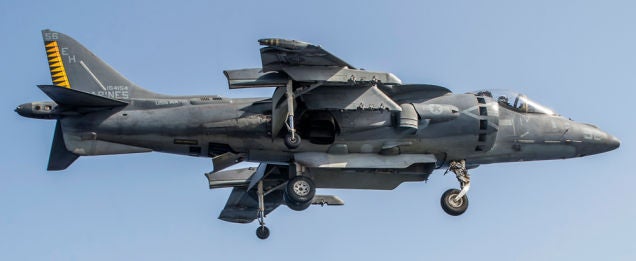
Then, in 1981, the newly formed British Aerospace (BAe) rejoined the project in a work-sharing role, giving it a much needed boost. Refinements to the aircraft continued, and the Harrier II eventually received larger air intakes with a redesigned inlet, and a redesign of the underside of the fuselage that allowed the Harrier II to use reflected engine exhaust to augment the lifting power of the engine. A redesigned supercritical wing reduced drag in transonic flight, and a hands-on-throttle-and-stick (HOTAS) helped reduce pilot workload. The latest and most powerful Pegasus engine provides 23,800 pounds of thrust, and a greater fuel capacity increases the range to 1,400 miles while the payload was increased to 9,200 pounds carried on six underwing pylons.
The first production AV-8Bs entered service with Marine Attack Training Squadron 203 in 1983 and, after extensive testing, the Harrier II joined the rest of the Marine Corps in 1985. The
BAe Harrier II
, derived from the American Harrier II, also entered service in the same year. The Harrier II has since become a workhorse of Marine aviation, serving extensively in the
Gulf War
of 1990-1991, the 1999 bombing of Yugoslavia during
Operation Allied Force
, and throughout the conflict in Afghanistan and the
Iraq War
. In addition to service with the USMC, the Harrier II also serves the navies of Spain (EAV-8B) and Italy, while the British retired the BAe Harrier II in 2011 ahead of its pending replacement by the
Lockheed Martin F-35B Lightning II
in 2019. Further upgrades produced the AV-8B Plus, which includes additional armaments and night fighting capability.
(US Navy photos)
!!! UNKNOWN CONTENT TYPE !!!
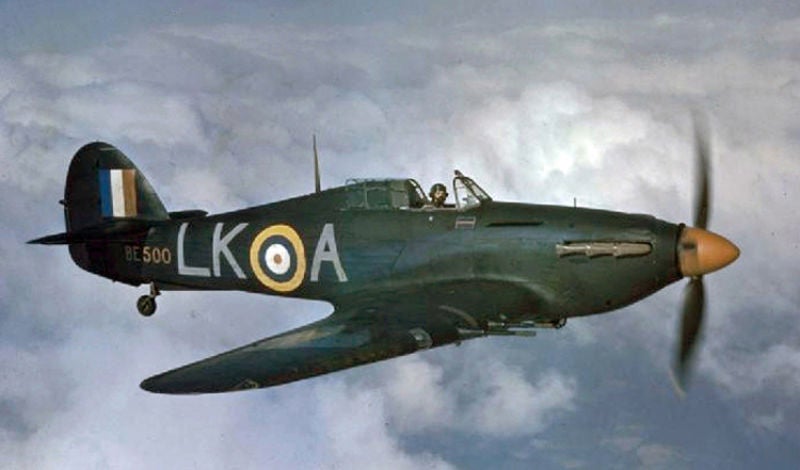
November 6, 1935 – The first flight of the Hawker Hurricane. There is an undeniable glamour in being a fighter pilot, wheeling above the clouds in one-on-one combat with your enemy. For that reason, the Supermarine Spitfire got all the glory for the high-flying exploits of its dashing pilots in the Second World War, but much of the yeoman’s work was done at lower altitudes, down on the deck, or slugging it out with waves of incoming bombers. That mission was the bailiwick of the Hawker Hurricane. It wasn’t the most glamorous fighter in the RAF, and its design hearkened back to an earlier era of aviation, but it was a hard hitting workman of an airplane that ultimately downed more enemy aircraft during the war than all other British aircraft types combined.
Development of the Hurricane traces back to the earlier Hawker Hart and Hawker Fury , both biplanes with fixed-pitch wooden propellers. Famed Hawker designer Sydney Camm began an in-house project to develop a new fighter by creating a cantilever monoplane with fixed landing gear, before further refining the design to include retractable gear. He also replaced the underpowered Rolls-Royce Goshawk engine with the more powerful PV-12, which would later be developed into the Merlin , one of the greatest piston engines ever produced. Hawker progressed so far on the fighter that the Air Ministry simply wrote Specification F.36/34 to match the new airplane, and the Hurricane was born.
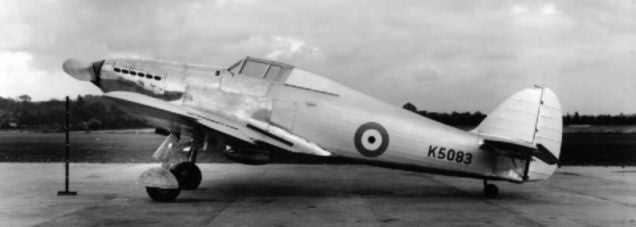
When it entered service in 1937, the “Hurry” was the first monoplane fighter to serve the RAF. During the Battle of Britain , the Spitfire got much of the press for its high speed and high altitude performance against German fighters, while the Hurricane, which was 30-40 mph slower, took on the German bombers. In the Mediterranean theater, the Hurricane was outclassed with the arrival of the Messerschmitt Bf 109E , but still remained a potent ground attack aircraft, and was instrumental in the pivotal British victory at El Alamein in North Africa. Hurricanes also played a vital role in the Allied victory in the Siege of Malta , and nearly 3,000 were delivered to the Soviet Union, but its use solely as a day fighter was over by 1943.
Interestingly, for all that the Spitfire was a famous dogfighter, the Hurry was actually more agile than the Spit at altitudes below 20,000 feet, having a tighter turning radius and a superior roll rate. The prototype Hurricane came with a stressed fabric skin and a two-bladed wooden propeller, but with the addition of a variable-pitch propeller , metal wings and armor plating, the aircraft that was known as the “Mk 1 (revised)” became the primary production model and formed the backbone of the RAF throughout the war and served in every theater of the conflict. To address the high altitude performance issues in the original Hurricane, Hawker developed the Hurricane II which had a two-stage supercharger, a strengthened wing and additional attachment points for external stores. Other variants followed, including the Sea Hurricane, which was modified for carrier operations. Over 14,000 Hurricanes were produced, though only 12 remain airworthy today. (UK government photos)
!!! UNKNOWN CONTENT TYPE !!!
!!! UNKNOWN CONTENT TYPE !!!
!!! UNKNOWN CONTENT TYPE !!!
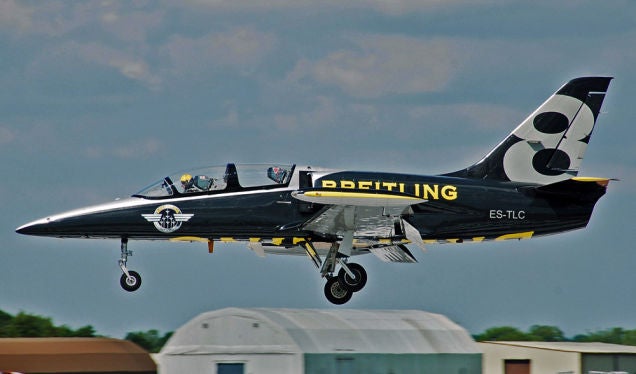
November 4, 1968 – The first flight of the Aero L-39 Albatros, a two-seat jet trainer developed by the Czech aircraft manufacturer Aero Vodochody as a replacement for the Aero L-29 Delfin . The Albatros was the first jet trainer to be equipped with a turbofan engine rather than a turbojet, and its straight wing helps provide stable flying characteristics at lower speeds. The L-39 has become popular on the air show circuit with private flight demonstration teams and, while it was designed as a trainer, it has also proven popular as a ground attack aircraft for nations with smaller military budgets. The L-29 was subsequently developed into the L-59 Super Albatros/ L-159 ALCA , which features a strengthened fuselage, longer nose, updated cockpit and avionics and a more powerful engine. More than 2,800 L-29s were produced from 1971-1990. (Photo by Adrian Pingstone via Wikimedia Commons )
!!! UNKNOWN CONTENT TYPE !!!
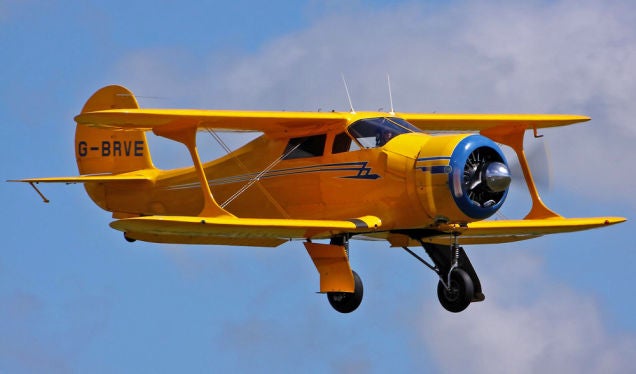
November 4, 1932 – The first flight of the Beechcraft Model 17 Staggerwing. Arguably one of the most graceful aircraft to come out of the Golden Age of Flight , the Staggerwing gained its name from the negative wing stagger that placed the lower wing ahead of the upper wing. This arrangement offers improved visibility for the pilot, and also reduces aerodynamic interference between the wings while also providing a home for the retracting landing gear ahead of the center of gravity. The Model 17 was one of the earliest airplanes marketed to flying executives, with an enclosed cabin that carried a pilot and three passengers. Its retractable landing gear was a rarity at the time. The “Stag” was also popular with air racers, and served the US military as a liaison aircraft, where it was designated the UC-43 Traveler. (Photo by Tim Felce via Wikimedia Commons )
!!! UNKNOWN CONTENT TYPE !!!
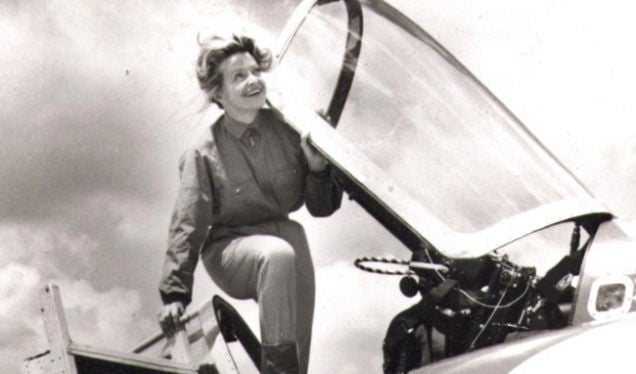
November 5, 1917 – The birth of Jacqueline Auriol, a pioneering French aviatrix. Auriol aided the French Resistance during WWII before earning her pilot license in 1948, and performed as a stunt flier and test pilot. After earning her military pilot license in 1950, Auriol qualified as one the first female test pilots, and became one of the first women to break the sound barrier. She went on to set five world speed records in the 1950s and 1960s. Auriol is a four-time winner of the prestigious Harmon Trophy for outstanding achievements in aviation, and a founding member of the Académie de l’air et de l’espace . Auriol died on February 11, 2000 at the age of 82. (Photo by Sieg94 via Wikimedia Commons )
!!! UNKNOWN CONTENT TYPE !!!
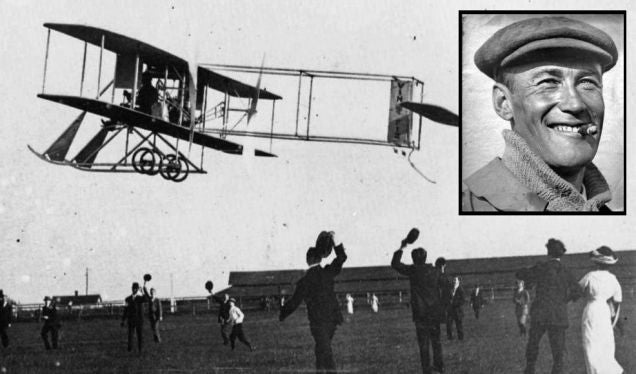
November 5, 1911 – Calbraith Rodgers completes the first coast-to-coast flight across the United States. Hoping to claim a $50,000 prize purse offered by publishing magnate William Randolph Hearst , Rodgers set out from Sheepshead Bay, New York on September 7 flying a Wright Model EX named the Vin Fiz Flyer after its soft drink company sponsor. Rodgers headed for Texas to skirt the Rocky Mountains, and eventually landed in Pasadena, California. Rogers missed the deadline, and the prize money, by 19 days due to 70 stops caused by mechanical troubles and crashes along the way. Rodgers died just 5 months later when he flew into a flock of birds and crashed while making an exhibition flight. (Photo authors unknown)
!!! UNKNOWN CONTENT TYPE !!!
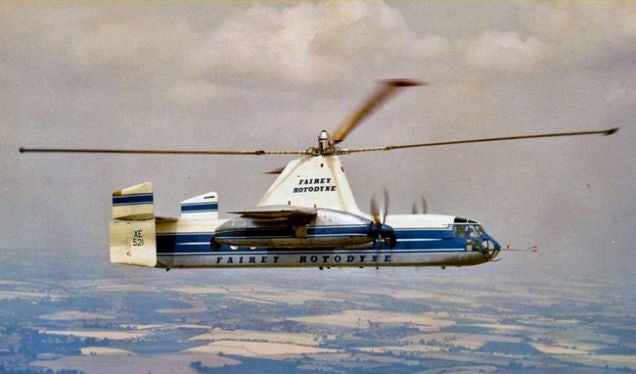
November 6, 1957 – The first flight of the Fairey Rotodyne. Though resembling a helicopter, the Rotodyne was actually a gyrodyne , a class of aircraft where forward propulsion is provided through conventional engines while lift is provided by short wings and a large powered rotor. The Rotodyne’s rotor was turned by jets on the rotor tips which were powered for takeoff, landing and hovering, but were unpowered during flight. In this way, the Rotodyne acted as an autogyro . Intended for civilian or military transport, the Rotodyne was canceled after the construction of one prototype as no customers were found, and also amid concerns over the noise produced by the rotor’s tip-jets. (Photo author unknown)
!!! UNKNOWN CONTENT TYPE !!!
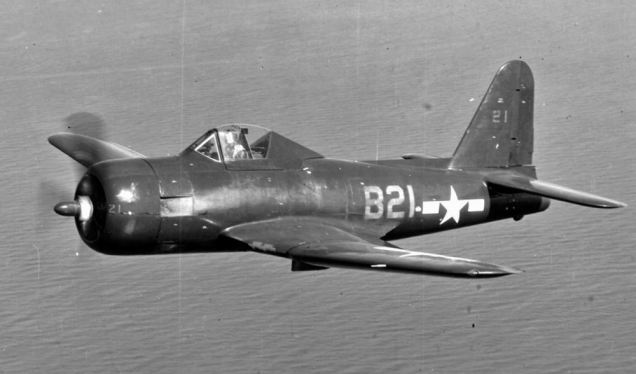
November 6, 1945 – The first jet-powered airplane lands on a US Navy aircraft carrier. The rather unfortunately named Ryan FR Fireball was a mixed-power aircraft, having both a radial engine and an early turbojet engine, as jet engines were still untrusted. The first aircraft to enter US Navy service to include a jet engine, the Fireball made the first jet landing unintentionally when US Marine Corps pilot J.C. West landed aboard the escort carrier USS Wake Island (CVE-65) under jet power alone after his radial engine failed. The Fireball proved fragile and unsuited to carrier operations, often breaking apart on landing. Only 71 were built, and the type was retired in 1947. (US Navy photo)
!!! UNKNOWN CONTENT TYPE !!!
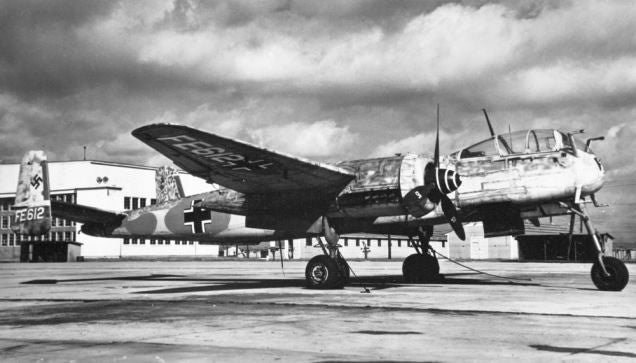
November 6, 1942 – The first flight of the Heinkel He 219. A very advanced aircraft for its day, the He 219 Uhu (Eagle Owl) was used by the Luftwaffe primarily as a night fighter in the closing stages of WWII. The 219 was fitted with a Lichtenstein SN-2 VHF radar and was the first operational Luftwaffe warplane to use a tricycle landing gear and the first operational aircraft to have an ejection seat. Coming late in the war, the He 219 fought well, claiming five RAF bombers shot down on its first night of operation. However, with less than 300 produced, there were not enough of them to make a significant impact on the outcome of the war. (Photo via San Diego Air & Space Museum Archives)
!!! UNKNOWN CONTENT TYPE !!!
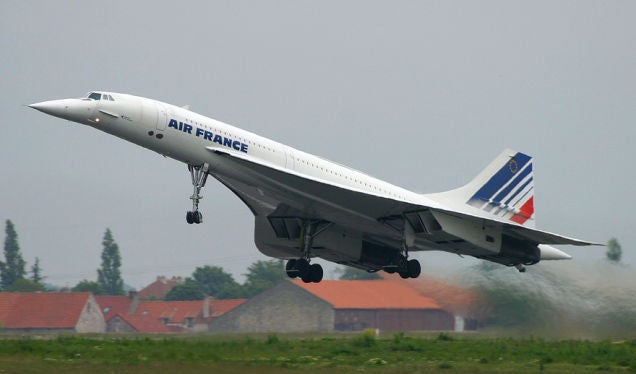
November 7, 2001 – The Concorde resumes passenger flights. On July 25, 2000, Air France Flight 4590 (F-BTSC) crashed shortly after takeoff from Paris-Charles de Gaulle Airport. The official cause of the crash was cited as debris on the runway that damaged a tire and lead to a fuel leak and catastrophic fire. Though it was the only crash in the history of Concorde operations, all Concordes were grounded during the investigation, and remaining aircraft were updated with Kevlar-lined fuel tanks and burst-resistant tires before retuning to service. Ultimately, the Concorde could not overcome a downturn in air travel following the the Flight 4590 crash and the September 11 terrorist attacks , as well as high maintenance and fuel costs, and all Concordes were retired in 2003. (Photo by Alexander Jonsson via Wikimedia Commons )
!!! UNKNOWN CONTENT TYPE !!!
!!! UNKNOWN CONTENT TYPE !!!
!!! UNKNOWN CONTENT TYPE !!!
!!! UNKNOWN CONTENT TYPE !!!
!!! UNKNOWN CONTENT TYPE !!!
!!! UNKNOWN CONTENT TYPE !!!
!!! UNKNOWN CONTENT TYPE !!!
If you enjoy these Aviation History posts, please let me know in the comments. And if you missed any of the past articles, you can find them all at
Planelopnik History
. You can also find more stories about aviation, aviators and airplane oddities at
Wingspan
.
!!! UNKNOWN CONTENT TYPE !!!
 "Smallbear wants a modern Syclone, local Maple Leafs spammer" (smallbear94)
"Smallbear wants a modern Syclone, local Maple Leafs spammer" (smallbear94)
11/07/2017 at 13:04, STARS: 1
Re the Hurricane:
The turning radius was also far smaller than that of the ME109. Advice on how to handle the otherwise superior fighter if you got stuck in one-on-one combat was “never climb, never dive, just turn”.
 "Chariotoflove" (chariotoflove)
"Chariotoflove" (chariotoflove)
11/07/2017 at 13:06, STARS: 4
Want that Beechcraft.
 "Vlachen" (vlachenaranias)
"Vlachen" (vlachenaranias)
11/07/2017 at 13:51, STARS: 3
Re: The Scarrier. North Carolina Lawn Dart. Whistling Shitcan. Flying Pig.
That’s my bird. In fact, it is possible that I painted the vertstab shown in the second image. That was my squadron and not too long after I left, they canxed the non-tactical artwork waiver that we’d carried for our Tiger Tails.

11/07/2017 at 13:52, STARS: 3
It was more for the RAF and RN versions, but AVPRO designed their EXINT pod to carry personnel beneath the wings of a Harrier.

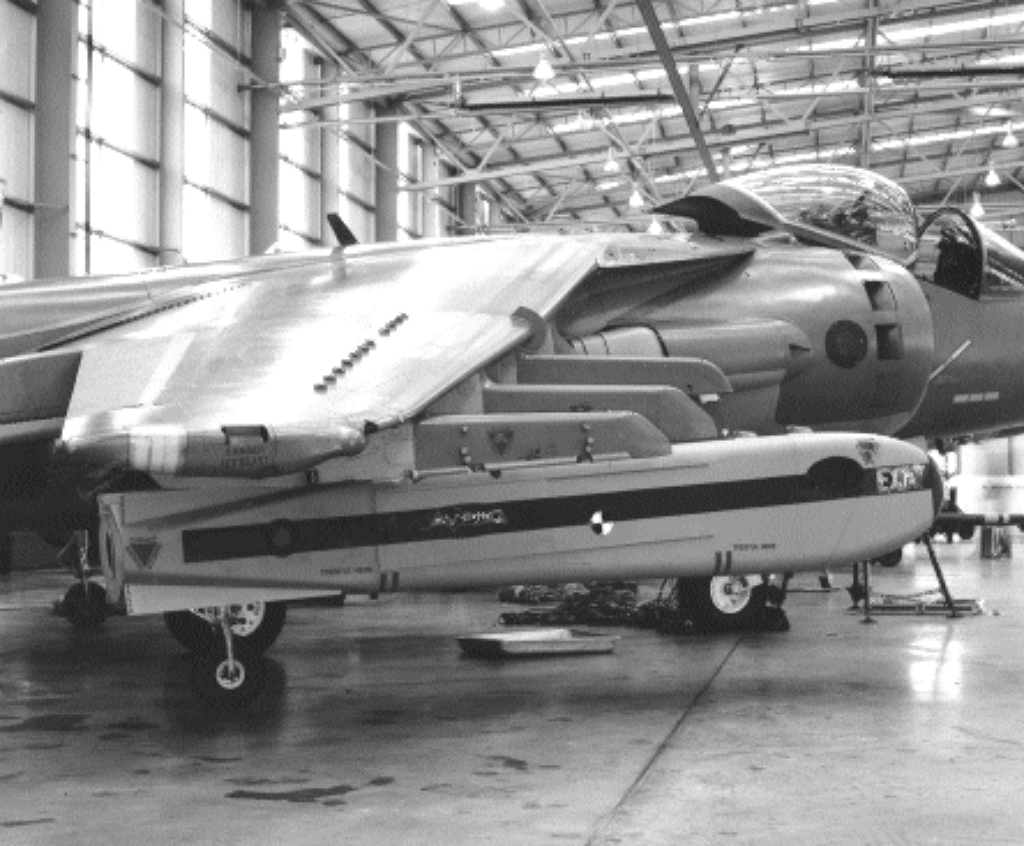

The pod was equipped with oxygen and a/c, but the noise would have been horrendous, and g-loads would have been an issue too. Neither the UK nor the US will acknowledge using the pod, but supposedly the Israelis bought several to be used with their Apaches
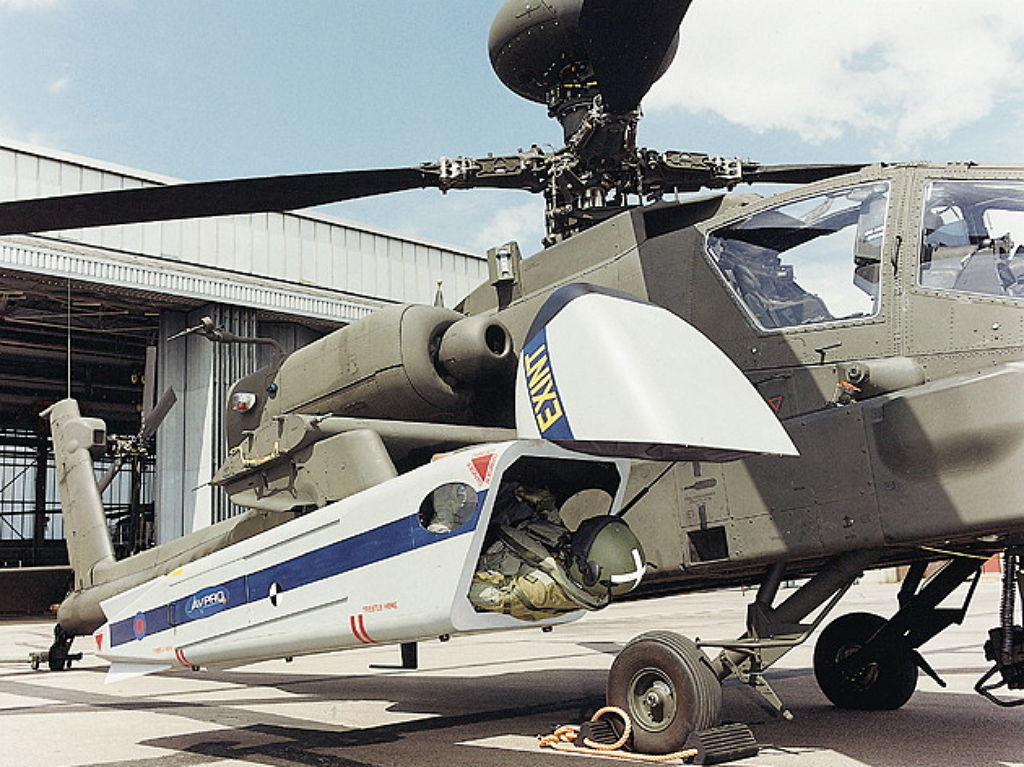
AVPRO even thought of mating their pod to an F-35, which will probably never happen.
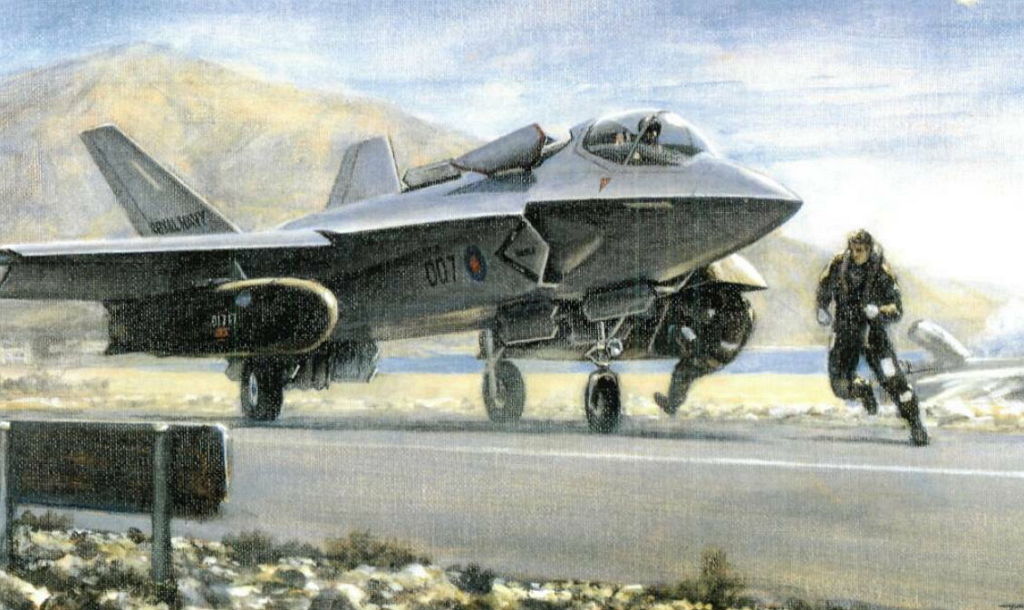
 "ttyymmnn" (ttyymmnn)
"ttyymmnn" (ttyymmnn)
11/07/2017 at 14:02, STARS: 2
Great photos. That would have been one hell of a ride. They tried something similar in WWII, here on an F-5 Lightning, the reconnaissance variant of the P-38 (note the camera windows in the nose). ( source )


 "ttyymmnn" (ttyymmnn)
"ttyymmnn" (ttyymmnn)
11/07/2017 at 14:04, STARS: 1
“North Carolina Lawn Dart.” That’s one I’d never heard. Awesome connection to that bird, though. I’ve only ever seen one flying once, at an air show. It was perhaps the loudest thing I’ve ever heard.
 "Vlachen" (vlachenaranias)
"Vlachen" (vlachenaranias)
11/07/2017 at 14:04, STARS: 2
WHAT?!
 "Vlachen" (vlachenaranias)
"Vlachen" (vlachenaranias)
11/07/2017 at 14:07, STARS: 2
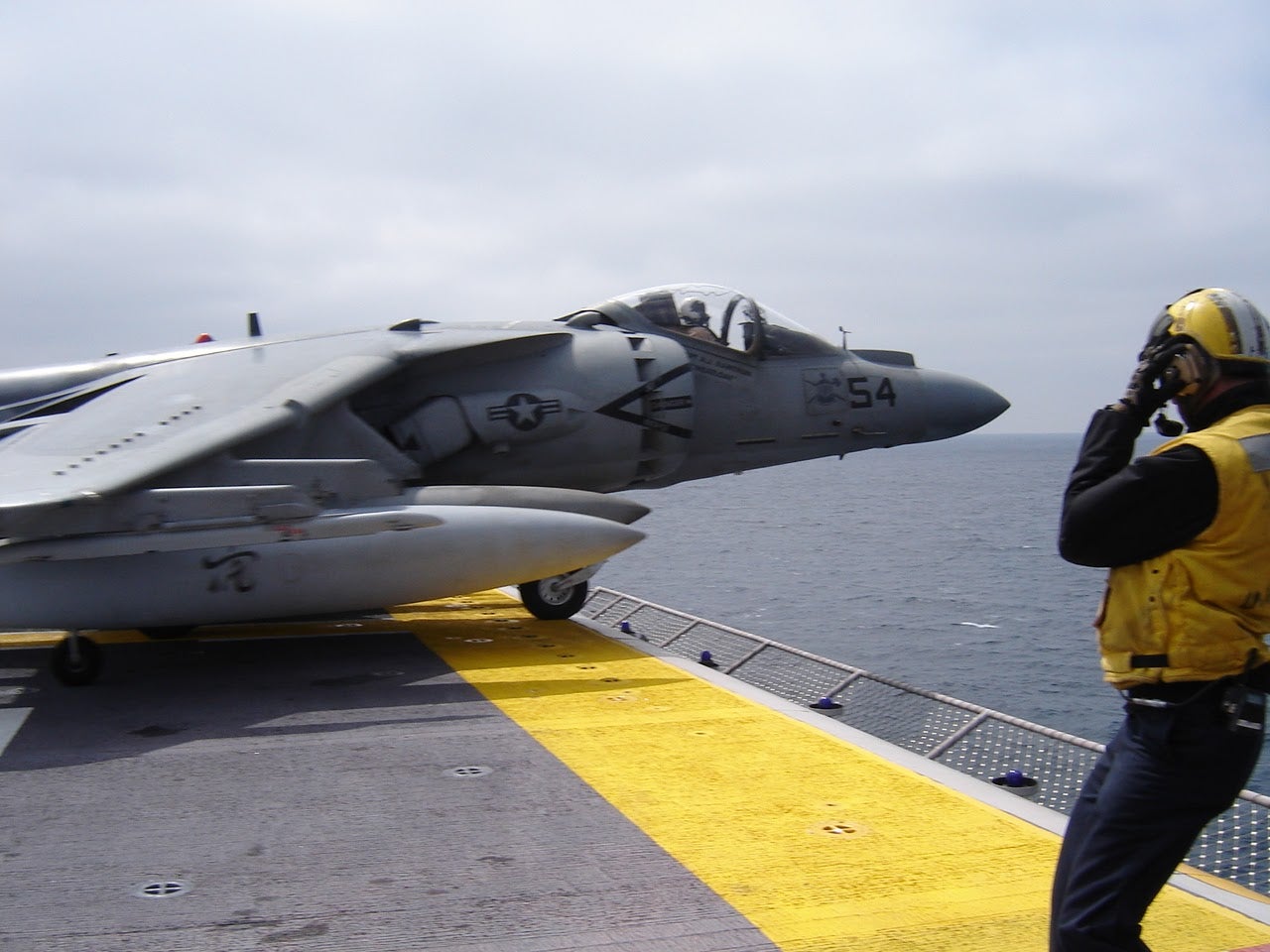
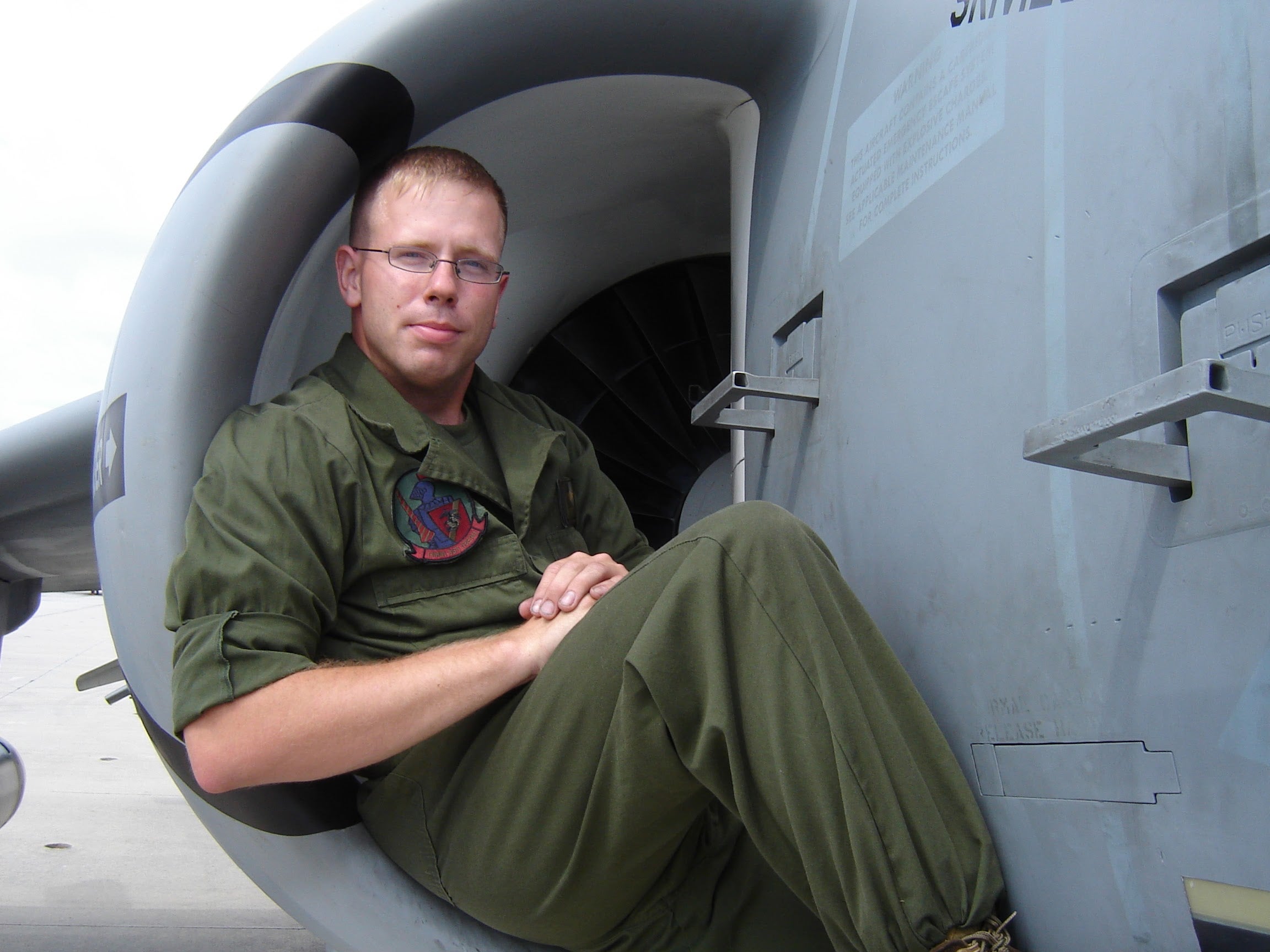
 "ttyymmnn" (ttyymmnn)
"ttyymmnn" (ttyymmnn)
11/07/2017 at 14:13, STARS: 1
That may not be entirely true. I play in the orchestra in Abilene, TX, home of Dyess AFB. In my free time, I go out and park near the base to watch and photograph the aircraft, usually a healthy dose of B-1s and C-130s. One day, for some reason, an EA-6B taxied out and took off. Maybe he stopped for lunch. No idea. Anyway, that mother was LOUD . When he spooled them up, it was absolutely deafening, and I was at least 200 yards away.
 "ttyymmnn" (ttyymmnn)
"ttyymmnn" (ttyymmnn)
11/07/2017 at 14:13, STARS: 1
I could have used you as a consultant on this article! Great shots.
 "facw" (facw)
"facw" (facw)
11/07/2017 at 14:17, STARS: 2
Looks better (and much quieter) than riding an Apache the hard way:
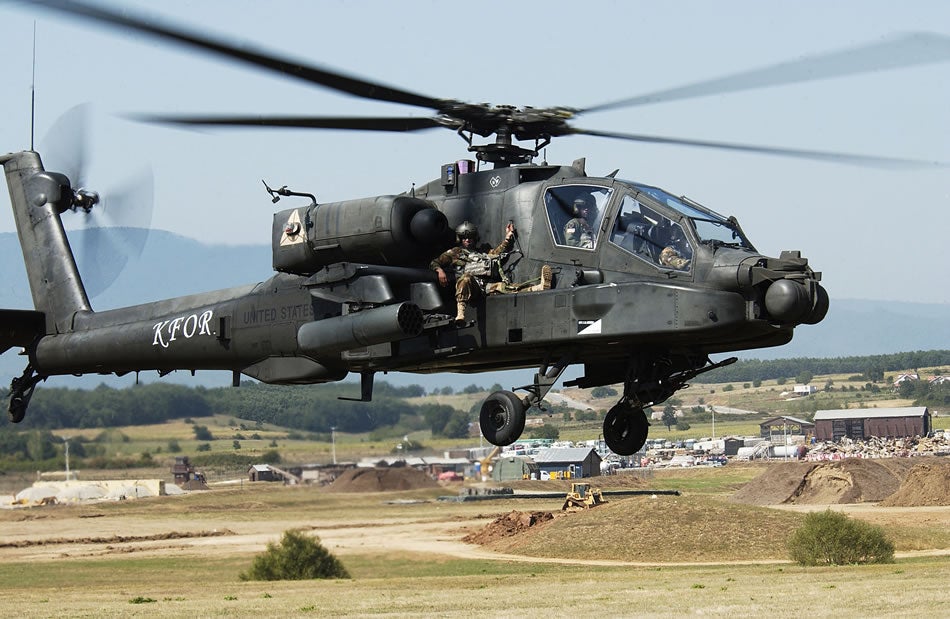
 "Vlachen" (vlachenaranias)
"Vlachen" (vlachenaranias)
11/07/2017 at 14:18, STARS: 2
You’ll have to speak up!
Really, those bastards are loud. We shared the same airbase in NC. Everyone who spends 4 years with the Harriers get a parting gift - permanent hearing damage. Tinnitus. Double hearing protection be damned.
The loudness problem is the size of the LPC fan combined with the really short intakes. I think an EA-6B has 10 feet of intake before the front of the compressor. Once they’re put in the corner, the Prowler’s get much louder. 2 engines can’t hurt either.
 "For Sweden" (rallybeetle)
"For Sweden" (rallybeetle)
11/07/2017 at 14:19, STARS: 3
STAGGER
____WING
 "Vlachen" (vlachenaranias)
"Vlachen" (vlachenaranias)
11/07/2017 at 14:19, STARS: 0
Thanks! I’m particularly proud of the flight deck shot. I’ve had many people look at that very confused, because it doesn’t make much sense.
When I tell them that he’s doing 50-60 knots in that picture, then you get to see the light bulb come on.

11/07/2017 at 14:38, STARS: 0
Beats the new gun pod for the A-10:

 "ttyymmnn" (ttyymmnn)
"ttyymmnn" (ttyymmnn)
11/07/2017 at 14:38, STARS: 1
Where in NC? I spent the majority of my younger life (pre-college) in Norfolk. Seeing the F-14s, E-2, etc really stoked my fascination with aviation. I remember hearing the sonic booms out to sea when we were at the beach.
I’ve got tinnitus, too, but it comes from years of sitting in front of trombones.
 "ttyymmnn" (ttyymmnn)
"ttyymmnn" (ttyymmnn)
11/07/2017 at 14:39, STARS: 1
Somebody has commented here in the past, can’t remember who, that the Harrier is sort of a useless jet, since it doesn’t have tremendous range, and can’t really carry a useful load. What’s your take on that?
 "Vlachen" (vlachenaranias)
"Vlachen" (vlachenaranias)
11/07/2017 at 14:42, STARS: 1
Cherry Point is the east coast’s Harrier nest, and where I spent much of my time. Yuma, AZ is the left coast’s.
 "Vlachen" (vlachenaranias)
"Vlachen" (vlachenaranias)
11/07/2017 at 14:50, STARS: 2
That is true in the context of its oft touted vertical capabilities. If you’re depending on an actual vertical takeoff, you’re hosed. You can’t carry any ordinance and you’ll need IFR as soon as you’re moving. Pretty pointless to get in the air that way.
The short takeoff ability is frequently used in active situations. Bombs, missiles, rockets, gun packs, they’re all viable coming off a flight deck or a runway. Given tankers on station, they’re more than capable. We did hundreds of CAS sorties in Afghanistan in ‘04.
The “land and takeoff from anywhere” shtick is OK on paper, but you’d still need a crew out there to make sure its short little intakes didn’t suck up a FOD garden.
 "Vlachen" (vlachenaranias)
"Vlachen" (vlachenaranias)
11/07/2017 at 15:05, STARS: 1
The birds on my second float.
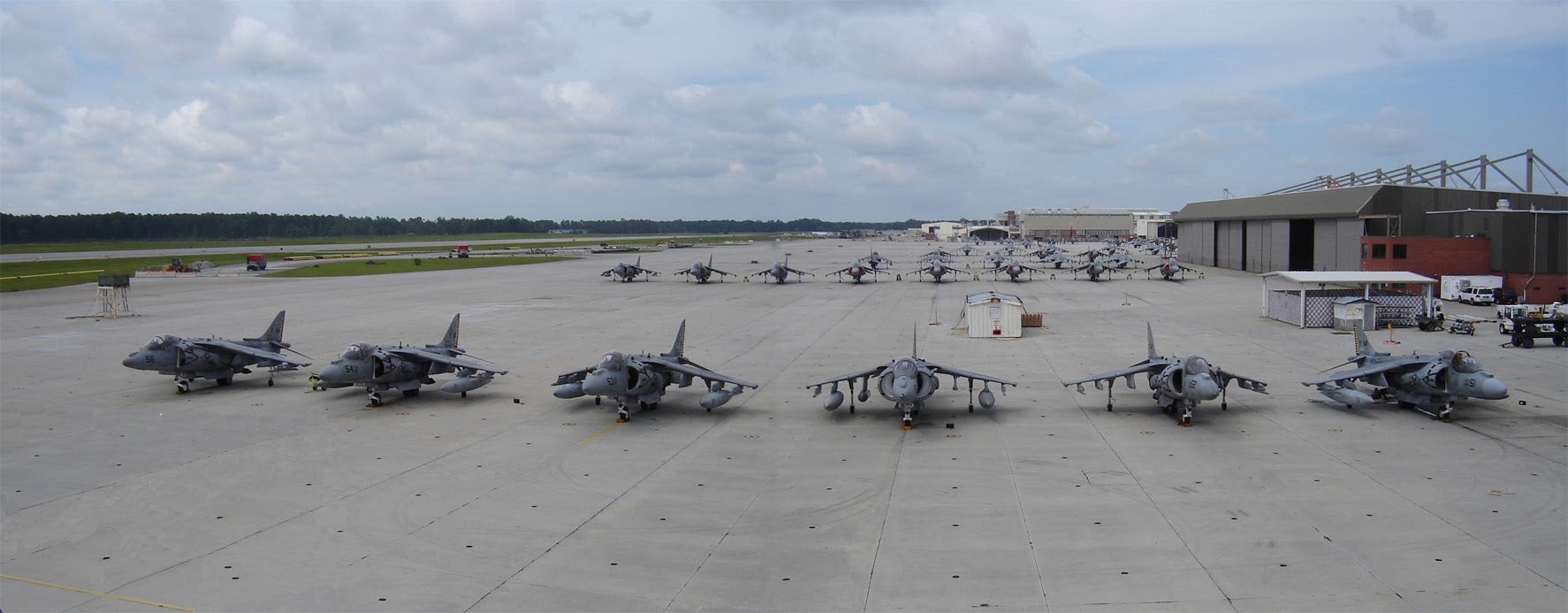
Long exposure on the CALA (Combat Aircraft Loading Area) in Yuma
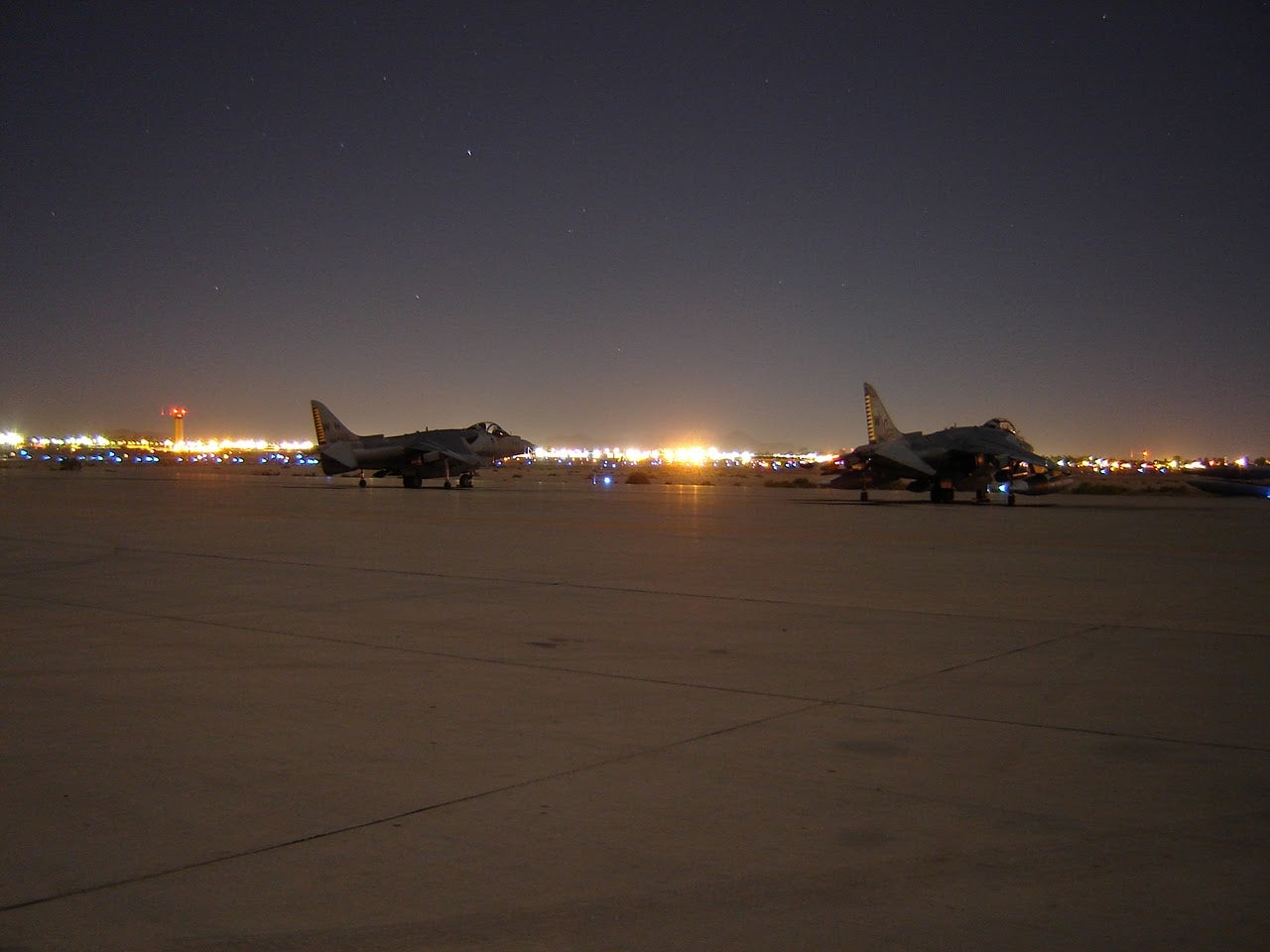
 "ttyymmnn" (ttyymmnn)
"ttyymmnn" (ttyymmnn)
11/07/2017 at 15:12, STARS: 0
“Second float”
Is that a Navy term for something?
 "Vlachen" (vlachenaranias)
"Vlachen" (vlachenaranias)
11/07/2017 at 15:15, STARS: 1
Kind of. It’s the term, usually used by Sailors and, in this case, Marines to say “shipboard deployment.” I was attached to two Marine Expeditionary Units (1 in ‘04 and the other in ‘06.) MEUs usually load up on a boat and just cruise the world for ~6 months. We just go float around.
 "Vlachen" (vlachenaranias)
"Vlachen" (vlachenaranias)
11/07/2017 at 16:59, STARS: 0
Hard pass.
 "WilliamsSW" (williamssw)
"WilliamsSW" (williamssw)
11/07/2017 at 17:02, STARS: 1
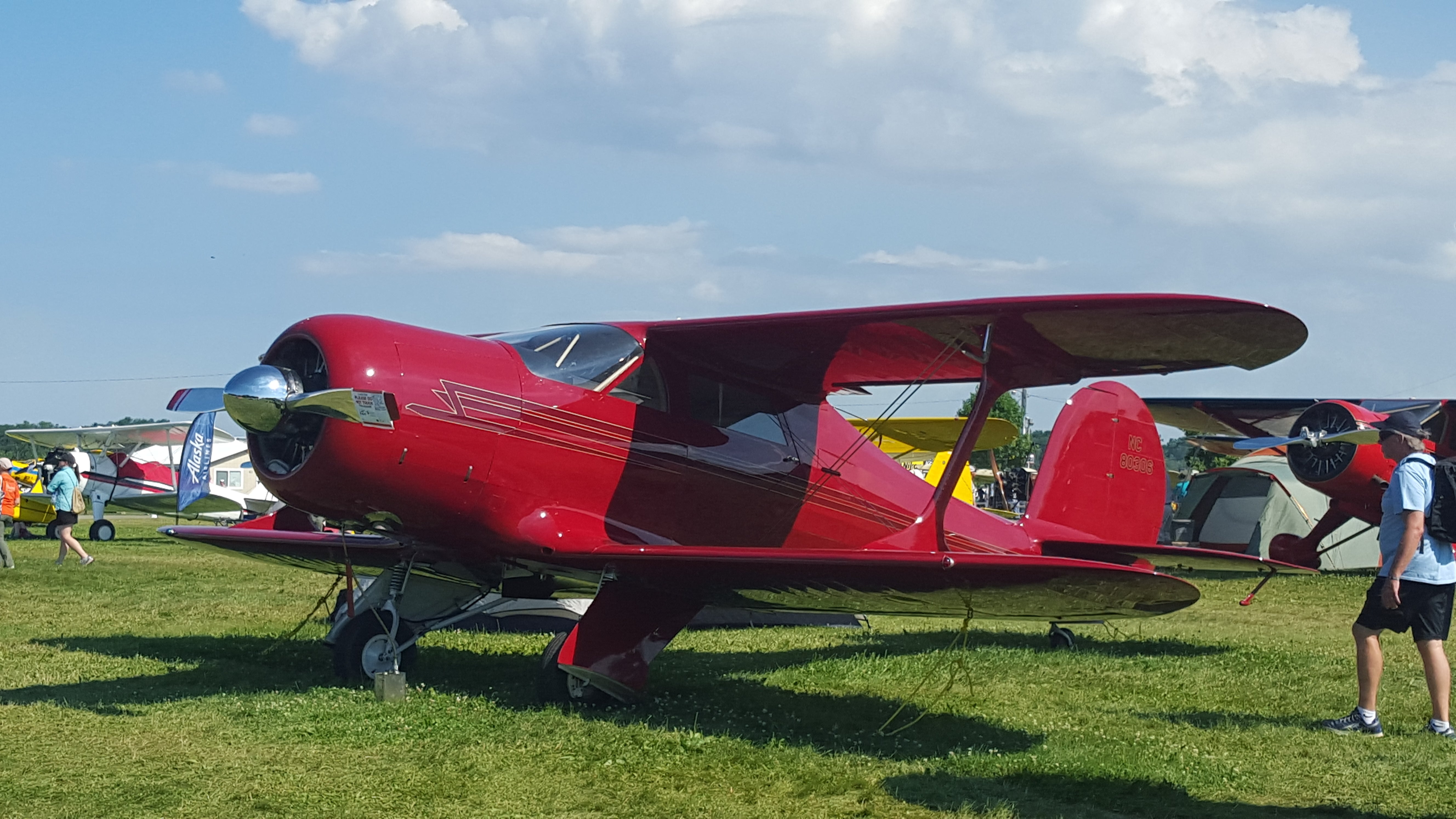
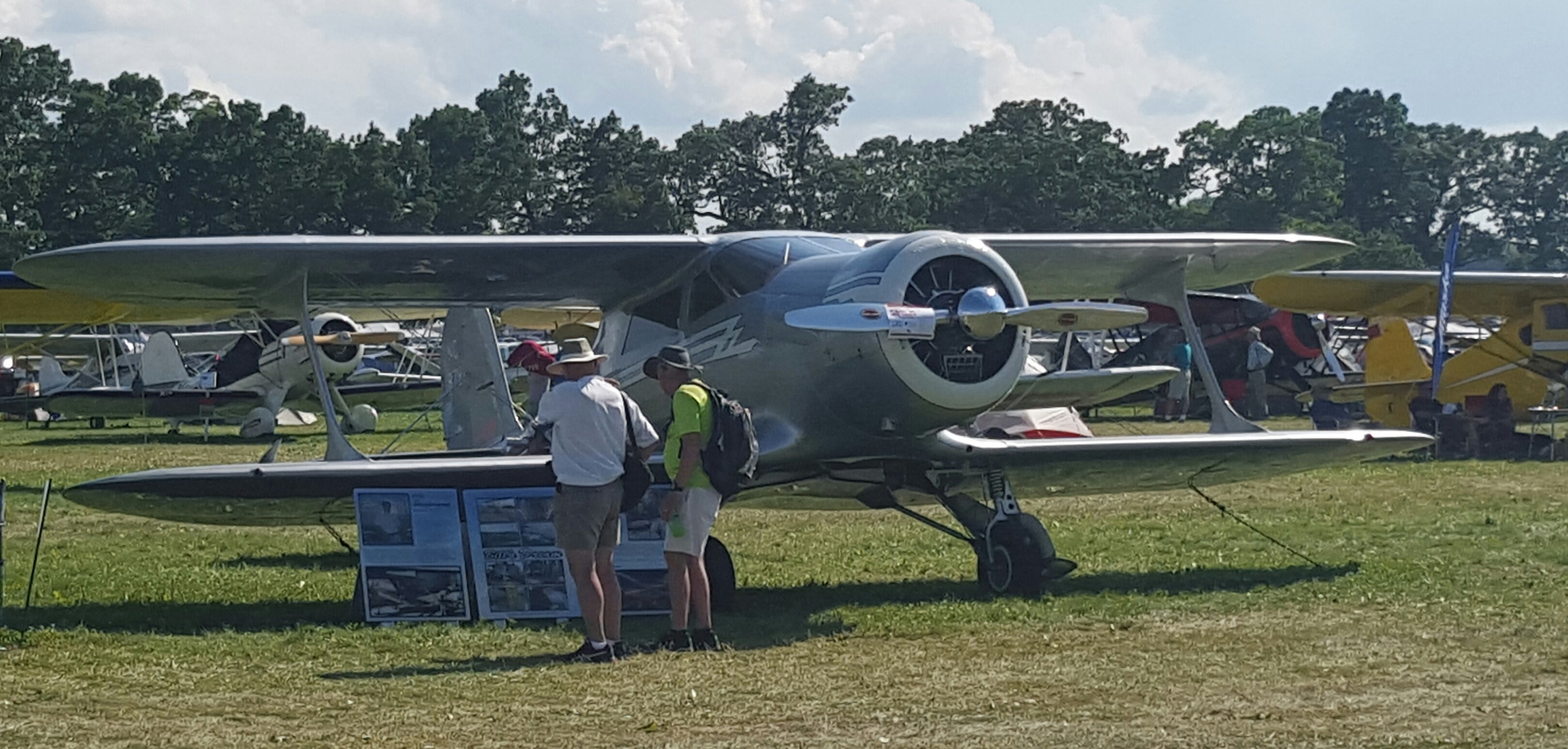
Have a couple more—

11/07/2017 at 17:06, STARS: 1
I mean, if I had to walk out of ‘Stan, or get stuffed into a pod strapped to an F-35?
Um...
Y’know what, I could use a brisk stroll. (/kidding)
 "Vlachen" (vlachenaranias)
"Vlachen" (vlachenaranias)
11/07/2017 at 17:11, STARS: 1
The desert is nice this time of year.
 "Cé hé sin" (michael-m-mouse)
"Cé hé sin" (michael-m-mouse)
11/07/2017 at 17:18, STARS: 1
Turned out to be very useful in the Falklands though.
 "ttyymmnn" (ttyymmnn)
"ttyymmnn" (ttyymmnn)
11/07/2017 at 17:22, STARS: 0
Useful because it was all they had.
 "Cé hé sin" (michael-m-mouse)
"Cé hé sin" (michael-m-mouse)
11/07/2017 at 17:27, STARS: 0
Ah, the Rotodyne. One of those great “what ifs”. It was claimed that the noise problem had been greatly reduced as development proceeded and only lasted a couple of minutes during landing and take off anyway but the damage was done.
 "ttyymmnn" (ttyymmnn)
"ttyymmnn" (ttyymmnn)
11/07/2017 at 17:38, STARS: 0
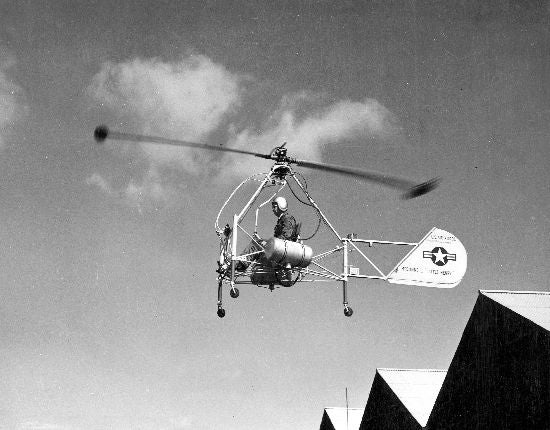
Perhaps it just wan’t a very good idea.
 "Chariotoflove" (chariotoflove)
"Chariotoflove" (chariotoflove)
11/07/2017 at 19:24, STARS: 1
Hnnnngggg
 "Distraxi's idea of perfection is a Jagroen" (distraxi)
"Distraxi's idea of perfection is a Jagroen" (distraxi)
11/07/2017 at 20:36, STARS: 1
My conclusion after being about 50m from a hovering one at an air show was that all this vectored thrust stuff is BS. They’ve got big speakers hidden behind the nozzles and the thing balances on a column of pure sound.